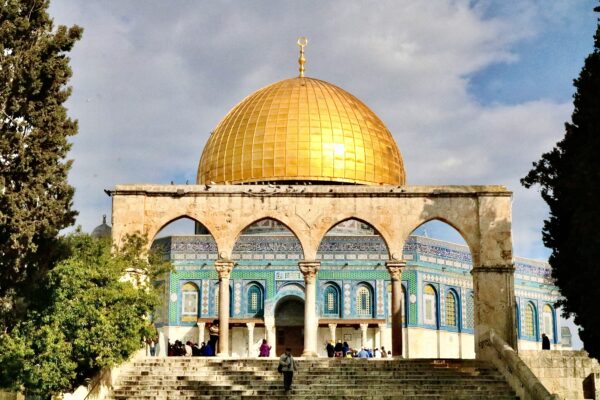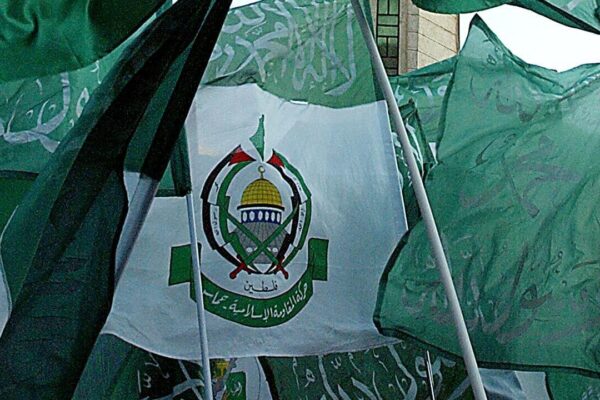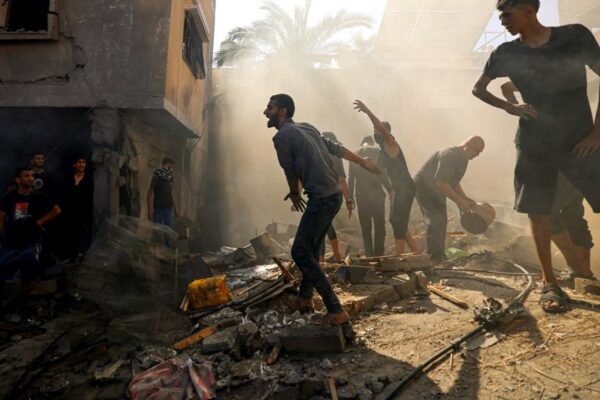Theodor Herzl, the father of modern Zionism, originated the concept of a Jewish state stretching from the Nile to the Euphrates.
Theodor Herzl, the father of modern Zionism, originated the concept of a Jewish state stretching from the Nile to the Euphrates.
As Hitler wanted his living space, Israel’s illegal state led by extremist Benjamin Netanyahu no longer hid its project for a great Israel.
The twenty-fifth election to the Knesset [Israeli Parliament] in November 2022 resulted in the formation of the most extremist governing coalition in Israeli history. They are representatives of the Zionist ideology, whose goal is to put an end to the presence of the Palestinians.
Along with Prime Minister Benjamin Netanyahu, radical personalities such as Itamar Ben Gvir, Minister of National Security, and Bezalel Smotrich, Minister of Finance and Deputy Minister of Defense, are in charge of the West Bank.
Since they took office, the West Bank has experienced an unprecedented acceleration in colonisation. In March 2023, this government reversed the disengagement plan adopted by Ariel Sharon in 2005 to allow settlers to return to certain settlements in the north of the West Bank, notably Homesh, the hub of the extremist settler movement.
In the documentary, In Israel: Ministers of Chaos, produced by Arte, Israeli Finance Minister Bezalel Smotrich says he wants a “Jewish State,” adding, “It is written that the future of Jerusalem is to expand to Damascus.”
This extreme ideology is reflected in Theodor Herzl’s diaries (Vol 2, Page 711), where he states, “The Jewish state stretches from the Brook of Egypt to the Euphrates.”
Theodor Herzl, the father of modern Zionism, originated the concept of a Jewish state stretching from the Nile to the Euphrates.
His vision of a neo-biblical Jewish state implies significant geopolitical implications, suggesting potential Israeli ambitions to annexe territories from neighbouring countries, including regions from southern Turkey to Saudi Arabia.
This idea raises concerns about regional expansionism in the Middle East.
During his speech at the United Nations General Assembly last September, Netanyahu again held up two cards, titled “The Blessing” and “The Curse.” They served to illustrate Israel’s potential integration into the Middle East versus Iran’s influence throughout the region with an “arc of terror”: Syria, Iraq, and Iran. He accused Tehran of wanting to “impose terror”.
On the map of the curse, neither Gaza nor the West Bank was represented but an annexationist “Greater Israel”. Last year at the General Assembly, he also displayed a map illustrating a “new Middle East” erasing Palestine.
In a statement, the Palestinian Foreign Ministry said, “Netanyahu’s map reveals the truth of the colonial and racist agendas of the extremist right-wing government”.
As Israel has recently invaded Southern Lebanon and the southern suburbs of Beirut, Israeli settlers’ ambitions to colonise Lebanon seem to be gaining ground.
This military escalation may constitute a preemptive measure to solidify Israeli dominance over the northern region of occupied Palestine adjacent to Lebanon and potentially beyond.
“Lebanon, even though it has a flag and even though it has political institutions, does not meet the definition of a country,” wrote Amichai Chikli, Israel’s Minister of Diaspora Affairs, on X last month.
Chikli even suggested “recalculating a course regarding the borderline with the entity that calls itself a state Lebanon.”
Although deemed a fantasy, the idea of a “Greater Israel” seems to be central to the Israeli debate by increasingly influencing Israeli politics through expansionist rhetoric from Israeli ministers and Netanyahu government actions.
Israel’s invasion of Lebanon, a sovereign state, is not new. Before Israel’s current assault in southern Lebanon, it invaded Lebanon three times in 1978, 1982 and 2006.
The first major invasion occurred in 1978 (Operation Litani) following cross-border attacks from the Palestine Liberation Organization (PLO).
In 1982, Israel launched a much larger invasion (Operation Peace for Galilee) to expel the PLO from Lebanon, leading to its occupation of southern Lebanon and eventually to the PLO’s forced departure from Beirut. Israel maintained a security zone in south Lebanon until 2000, supporting local militias to counter Hezbollah, which had emerged as a significant force resisting Israel’s presence.
Continued clashes with Hezbollah led to the 2006 Lebanon War, a month-long conflict. Israel mainly targeted – and destroyed – the south of the country, Baalbek and the southern suburbs of Beirut, leaving nearly 1,200 dead, more than 4,000 injured, and almost a million displaced.
Israel completely ambushes northern Gaza
Besieged by the Israeli army, Palestinians in Jabalia, northern Gaza, are living their last days.
Recently, the Israeli Occupation Forces (IOF) have banned Palestinians from Northern Gaza from returning to their homes as Israeli ground forces move closer to completely eradicating northern Gaza, according to a press briefing.
International humanitarian law experts have condemned this approach as a war crime, notably the forced expulsion and the militarisation of food.
Although the Israeli military and government have repeatedly denied any attempt to force the remaining population of northern Gaza to flee, human rights groups and aid agencies have said Israel appears to be implementing a version of the “generals’ plan,” which proposes to eradicate the north by treating everyone as a combatant.
Against a backdrop of intensified Israeli army operations and a near-total halt to food aid, famine threatens in the north of the Gaza Strip, according to an alert from the Famine Review Committee.
The UN-backed assessment, released on 10 November, warned of “an imminent and substantial likelihood of famine occurring due to the rapidly deteriorating situation in the Gaza Strip.”
On 17 October, a previous IPC (Integrated Food Security Phase Classification) report, the result of expert work by NGOs and UN agencies, including the Food and Agriculture Organisation (FAO) based in Rome, estimated that some 345,000 Gazans would face hunger at a “catastrophic” level between November and April 2025, which represents 16% of the population.
This assessment corresponds to the highest level of the Integrated Food Security Phase Classification, Phase 5 (3: crisis, 4: emergency, 5: disaster). However, the report underlines that the situation has deteriorated in the northern Gaza Strip since then, with the collapse of food systems, a drop in humanitarian aid, and a critical situation regarding water, sanitation, and hygiene.
“Access to food continues to deteriorate, with prices of essentials on the black market soaring. Cooking gas rose by 2,612%, diesel by 1,315% and wood by 250 per cent,” the report said.





